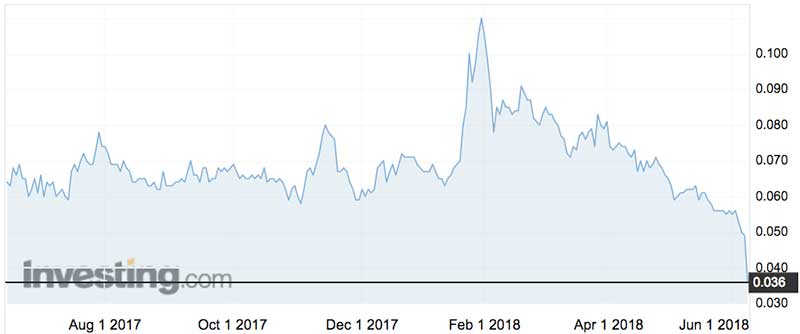Graphite ‘no longer meets investment criteria’; Battery Minerals loses funding, shares sink

Pic: Schroptschop / E+ via Getty Images
Graphite explorer Battery Minerals has lost $US30 million of funding and pushed back shipment dates after a private equity mining investor pulled out because “the graphite market no longer meets its investment criteria”.
Battery Minerals (ASX:BAT) shares dropped 39 per cent to an intraday low of 3c in early Wednesday trade.
Private equity investor Resource Capital Funds, which specialises in mining investments around the world, last month agreed to a $US30 million debt and equity package to fund a Battery Minerals graphite project near Montepuez in the south-east African nation of Mozambique.
At the time, Battery Minerals Boss David Flanagan said he was “particularly pleased that an investor of the calibre and experience of RCF wished to invest in us and they had confidence in the team, as we strive to be producing graphite concentrate and generating substantial cashflow in less than a year”.
But today Battery Minerals announced the funding deal with Resource Capital had been terminated.
Battery Minerals told investors in May it was hoping to ship graphite flake from Montepuez by March 2019 starting at 45,000 to 50,000 tonnes a year and expanding to 100,000 tonnes by 2020.
That has since blown out to June and was now “likely to be deferred from June 2019 for at least three months, but in any case approximately 12 months after project financing is completed”.

“RCF has advised Battery Minerals that despite first-phase due diligence being completed successfully, the graphite market no longer meets its investment criteria and therefore it will not seek the approval of its Investment Committee for investment in Battery Minerals,” the company told investors.
Graphite has historically been used in industrial applications such as refractory (or heat-resistant) bricks.
But more recently it’s been classed as a “battery metal” along with minerals such as ltihium and cobalt.
Lithium-ion batteries used to power electric cars require twice as much graphite as lithium. However some experts believe the next generation of batteries will replace graphite with silicon.
Graphite’s qualities as a fire suppressant — particularly in building materials — may end up being a bigger driver of demand.
>> Stockhead graphite guide: why fire resistance and not electric cars may drive these stocks
Despite caution from Resource Capital, Mr Flanagan offered a positive outlook for graphite.
“Our view is that the graphite market outlook continues to strengthen, driven by the impending surge in demand for graphite from lithium battery manufacturers as well as refractory products and the rapidly growing expandable graphite market.”
“In the absence of any further increase in graphite prices and based on costs derived from detailed definitive feasibility and value engineering studies, the company would generate strong operating margins of $US500 a tonne at it’s Montepuez Project.”
- Bookmark this link for small cap breaking news
- Discuss small cap news in our Facebook group
- Follow us on Facebook or Twitter
- Subscribe to our daily newsletter
Battery Minerals would restart discussions with other potential debt and other financiers immediately, the company said.
A separate $25 million share placement announced last month was on track for shareholder approval on June 27.
Battery Minerals had $14.8 million in the kity and was expecting another $9 million to $14 million after the shareholder meeting.
UNLOCK INSIGHTS
Discover the untold stories of emerging ASX stocks.
Daily news and expert analysis, it's free to subscribe.
By proceeding, you confirm you understand that we handle personal information in accordance with our Privacy Policy.








